Many of the fine art world’s biggest headlines these days are devoted to items from Asia which turn up in catalogues bearing modest estimates – then fetch dizzying money when the auction comes around.
Behind the headlines there’s another story. It has to do with a lack of confidence and, perhaps, a lack of sustained interest in this notoriously tricky sector of the fine art market. But things are changing. Last year, Herman & Wilkinson started to hold a twice-yearly sale of Asian art at its salerooms in Rathmines, Dublin – the first specialist sale of its kind in Ireland, complete with catalogue entries in Mandarin as well as English. It seems that others agree as to the importance of this area of antiques and collecting: Adam’s will hold its first sale of Asian artworks on November 3rd.
“Our sale is designed to allow new collectors and younger buyers a way in,” says Ross Ó Súilleabháin, associate director of Herman & Wilkinson. “We have prices from €20 all the way up to €18,000. The last sale was fantastic. There were no major “sleepers” [items that surprise the room by selling vastly over estimate] but everything made above its estimate so we were delighted.”
O Súilleabhain began his fine art career at Adam’s, which is where he developed his personal passion for Chinese porcelain. It’s all a bit of a mystery to those of us who can’t tell our Song from our Ming. So where should we start?
Well, he says, you can read – there’s a wealth of material in books and on the internet. You can visit museums and look at high-quality porcelain in exhibitions. “But the only way you can inform yourself about Chinese porcelain is actually to touch it. Buy it, and engage with it on a daily basis. ”
Dragon bowl
With this in mind he invites me to hold the sale’s star lot: a tiny, silky green-and-yellow dragon bowl which would fit comfortably into my hand, if that hand wasn’t sweating so much at the idea of clutching a piece of porcelain valued at between €12,000 and €18,000.
The vendor was equally shocked by this valuation – even Ó Súilleabháin admits to being pretty surprised when the piece (lot 42) arrived in to the auction rooms.
“Someone had purchased it, thought it was quite good, but didn’t know 100 per cent what it entailed,” he says. “It’s in a presentation case so the buyer knew it had been kept well. But the piece itself is phenomenal.”
The bowl has a mark which dates it to between 1736 and 1795 and the magnificent courts of the Qianlong Emperor. The yellow glaze indicates that it was reserved for the imperial court, as does the five-clawed dragon. “The glaze is perfect, the proportions are perfect, the colours are perfect and then there’s the seal mark on the bottom as well. Also, if you pivot it in the light there’s a pearlescence underneath that clear glaze.”
I am, frankly, relieved to see the dragon bowl safely returned to its box. It’s not, of course, the sort of piece O Súilleabhain has in mind when he advises beginners to get up close and personal with porcelain. Rather, he recommends lot 57 (€400-€600). A “chicken cup” painted with a rooster and chickens in a garden, it’s a 19th-century imitation of the 500-year-old Chenghua cup which, famously, sold four years ago at Sotheby’s Hong Kong for €26 million.
“If you’re buying pieces to educate yourself, this cup has all the elements that you’re looking for,” he says. “It’s exactly the same size as the original, and although the painting isn’t as good, it’s beautifully made. There’s a little imperfection on the inside. What that tells you is that if the cup was made in imperial times it would have been smashed, because imperfections weren’t allowed. The mark on the foot also has a couple of errors.”
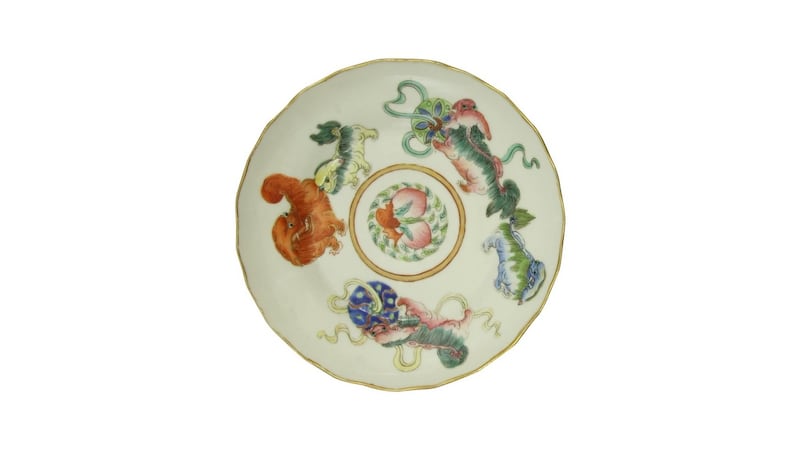
Another good beginner’s piece is a saucer with the mark of the Daoguang Emperor, who died in 1850 (lot 35, €200-€400). “You could have this for 10 years and you’d still find something new on it,” Ó Súilleabháin says.
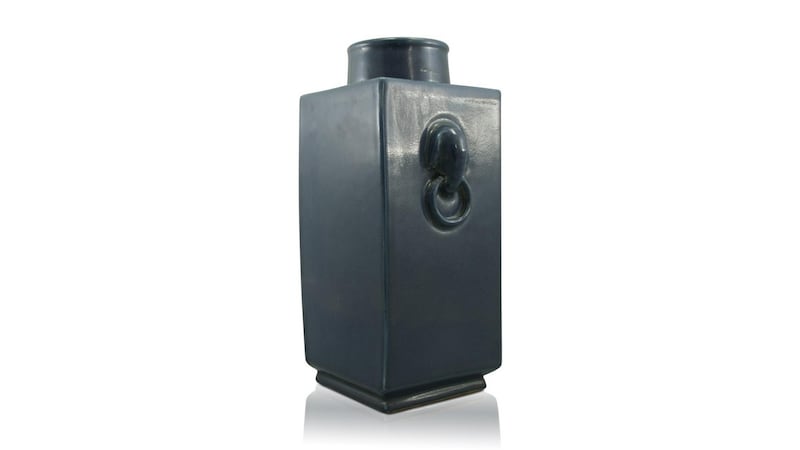
The sale also contains a number of pieces of monochrome porcelain. Traditionally this has been more highly regarded within China than the blue and white kind, which was often adapted for Western tastes – and it’s often very modern in appearance. So, at least, are the red tea bowls of lot 47 (€300-€500). Lot 81 is a Cong vase, which has a square shape with a circular foot and neck.
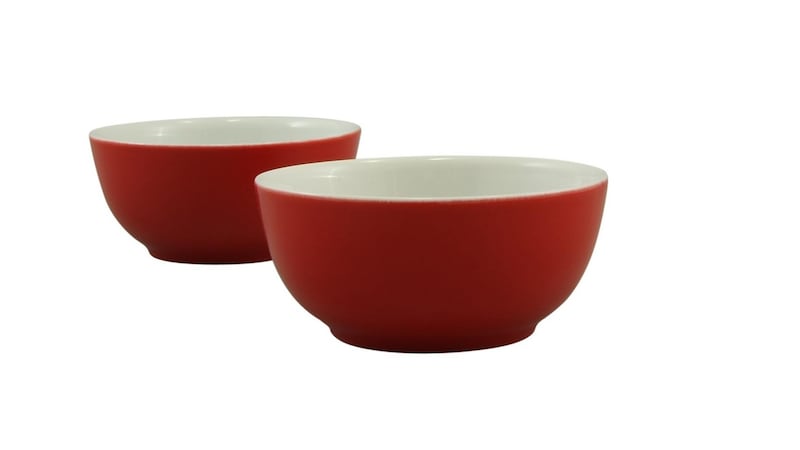
“The person who brought this in knew nothing about it,” says Ó Súilleabháin. “They reckon their father bought it in England about 50 or 60 years ago. He was a member of the British army. We haven’t been able to pin down whether he was ever in China – but anyway, it was brought to Ireland and has sat on a side table for all those years.
“It has the mark of the Kangxi emperor, and on the foot there’s a little bevel which was to help stop the vase from chipping, which was introduced during that reign.” The vase carries an estimate of €1,000-€2,000.
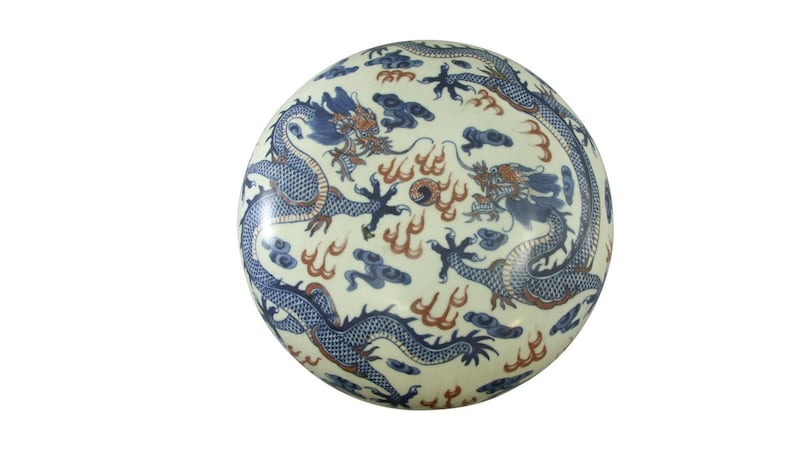
There are a couple of special pieces of jade: Lot 9 (€1,000-€2,000) is a bird on a vine in the unusual mutton-fat white colour; lot 8 (€500-€1,000), in the more traditional green, is a dog with a puppy clambering over his back.
Among its 208 lots the sale also offers items from Japan, Tibet and India as well as bronze and blanc de chine figures including lot 168, a seated Guan Yu (€500-€800); an embroidered robe (lot 38, €500-€800); a wall scroll (lot 112, €200-€300) and a carpet from the post-Republic period (lot 139, €600-€800).
Herman & Wilkinson, 161 Lower Rathmines Road, Dublin 6.
Asian Art Auction, July 4th, 6pm. For online catalogue, viewing times and bidding details see hermanwilkinson.ie
Top three Asian art sleepers
Obsessed with big money: who, us? Not at all. But it’s always fun to look back at the big prices, so here are our top three sleeping giants from recent sales of Asian art.
Dear deer
Earlier this month there was a major outbreak of ooh-la-la at Sotheby’s Paris saleroom when a 20-minute phone bidding war broke out over an 18th-century famille rose vase. Discovered by chance in the attic of a French family home, the vase – painted with deer, cranes and pine trees – had been brought in for valuation in a shoe box. It was estimated at €500,000-€700,000, and sold for €16.2 million.
Ming sings at Slane
There was huge excitement at Slane Castle in October 2011, when a 15th-century plate sold at Adam’s Country House sale for €310,000. Its pre-sale estimate was €2,000-€3,000. The 25cm Ming dynasty dish, which contained several hairline cracks, was painted with a five-claw dragon on a ground of lotus scrolls and tendrils.
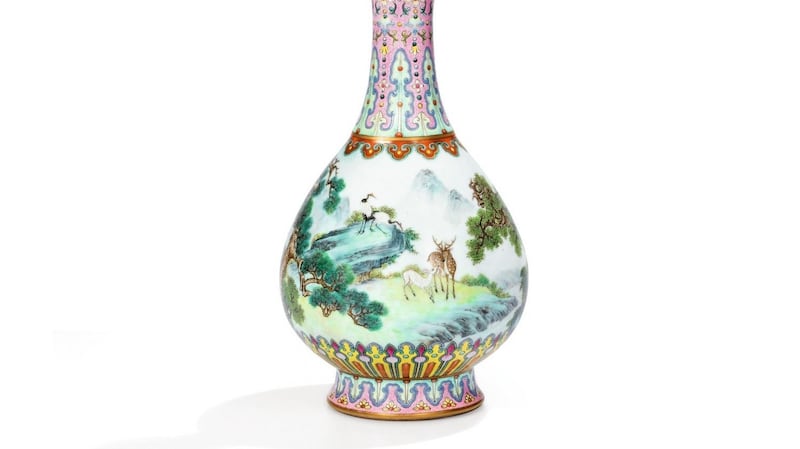
Durrow double
Last June a Chinese vase with a guide price of €800-€1,200 was sold at auction in Durrow, Co Laois for €740,000 – a new record for a public auction in Ireland. The Qing period blue and white double-gourd vase with scroll handles was offered for sale at a Sheppard’s auction. Consigned by a seller in Dublin, it was bought by a Paris-based bidder. More recently a blue and white dragon bowl, described as “possibly Ming” and estimated at €20,000-€30,000, sold at Sheppard’s Lissanisky House auction for €95,000.













